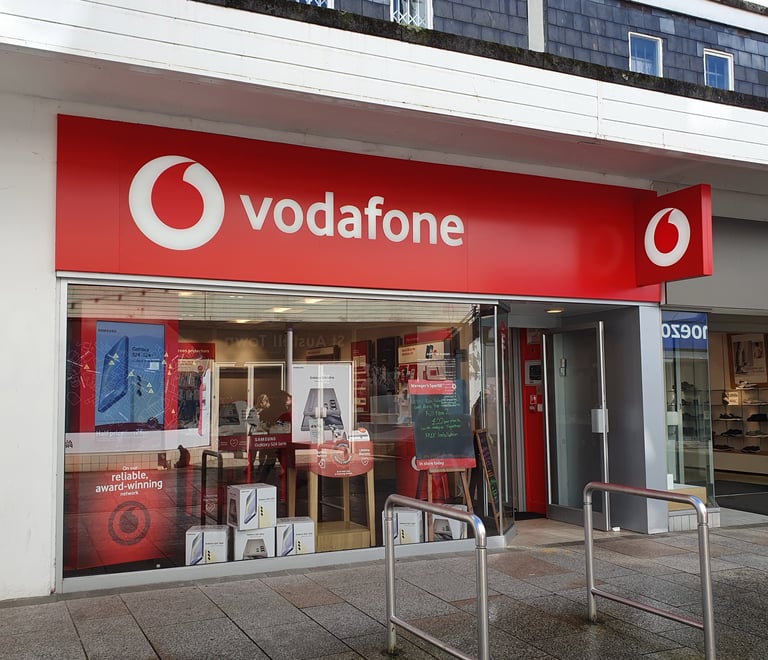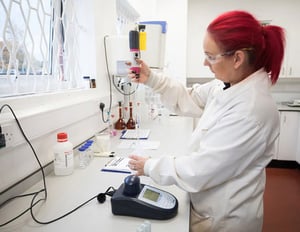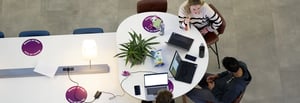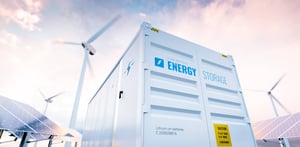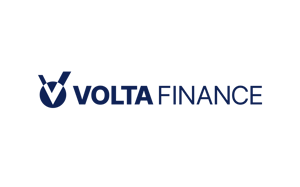Vodafone Group Plc (LON:VOD) today announced its results for the year ended 31 March 2018.
Highlights
· Group operating profit up 15.4% to €4.3 billion; profit for the year of €2.8 billion; total revenue down 2.2% to €46.6 billion, primarily due to the deconsolidation of Vodafone Netherlands and FX movements
· Substantial strategic progress: NGN partnerships in Italy/UK, Liberty Global transaction in Germany/CEE
· Organic service revenue up 1.6%** and Q4 up 1.4%**, with good momentum in data, fixed/convergence and Enterprise
· Strong growth in organic adjusted EBITDA, up 11.8%* to €14.7 billion and exceeding guidance for ‘around 10%’ organic growth; growth was 7.9%* excluding roaming, settlements and UK handset financing
· Free cash flow pre-spectrum improved by 34% to €5.4 billion, delivering guidance
· Vodafone India service revenue down 18.7%*, EBITDA down 34.5%*; merger with Idea Cellular expected to close in June
· Final dividend per share of 10.23 eurocents, up 2.0%, giving total dividends per share for the year of 15.07 eurocents
· 2019 financial guidance: organic adjusted EBITDA growth (excluding settlements and UK handset financing) of 1 – 5%; FCF pre-spectrum of at least €5.2 billion (including €0.2 billion of cash investment in the Gigabit Plan)
Vittorio Colao, Vodafone Group Plc Group Chief Executive, commented: This was a year of significant operational and strategic achievement and strong financial performance. Our sustained investment in network quality supported robust commercial momentum: we added a record number of fixed NGN and converged customers in Q4, mobile data usage continues to grow strongly and we grew both revenues and margins in Enterprise, despite roaming headwinds, and continued to reduce operating costs. As a result, underlying EBITDA grew 7.9%.
We have made good progress in securing approvals for the merger with Idea Cellular in India – which is expected to close imminently – and appointed the new management team, who will focus immediately on capturing the sizeable cost synergies. In addition, we agreed the merger of Indus Towers and Bharti Infratel, allowing Vodafone to own a significant co-controlling stake in India’s largest listed tower company. And we announced last week the acquisition of Liberty Global’s cable assets in Germany and Central and Eastern Europe, transforming the Group into Europe’s leading next generation network owner and a truly converged challenger to dominant incumbents.
We expect to sustain our profit growth in the year ahead, despite the arrival of a new entrant in Italy and competitive pressure in Spain, supported by the third year in a row of lower net operating costs. Our primary focus continues to be to accelerate the ‘Digital Vodafone’ programme, which we believe is a unique opportunity to enhance our customers’ experience, generate incremental value and improve cost efficiency.”
CHIEF EXECUTIVE’S STATEMENT
Financial review of the year
On 20 March 2017 we announced an agreement to merge Vodafone India with Idea Cellular (‘Idea’) in India. As a result, Vodafone India is excluded from Group figures, unless stated otherwise.
Financial results: Statutory performance measures
Group revenue for the year declined 2.2% to €46.6 billion, primarily due to the deconsolidation of Vodafone Netherlands following the creation of our joint-venture ‘VodafoneZiggo’, and foreign exchange movements. Operating profit rose to €4.3 billion compared to €3.7 billion in the prior year, reflecting operational leverage and the benefit of cost efficiency initiatives. Profit for the year was €2.8 billion, including a €2.2 billion net of tax reduction in the carrying value of the Group’s operations in India and a €1.9 billion increase in our deferred tax assets in Luxembourg.
Financial results: Alternative performance measures
Group organic service revenue grew 1.6%** (Q3: 1.1%*, Q4: 1.4%**). Growth was driven by broadband market share gains, strong data demand with good data monetisation in emerging markets, and the benefit of ‘more-for-more’ propositions across several European mobile markets. These factors offset a drag from EU ‘Roam Like At Home’ regulation and MTR changes, UK handset financing and lower wholesale revenues.
Group adjusted EBITDA was up 4.2% at €14.7 billion despite the deconsolidation of Vodafone Netherlands and adverse foreign exchange movements. Organic adjusted EBITDA grew 11.8%*, a significantly faster pace than service revenue. Excluding the negative impact of net roaming declines in Europe, the benefits of settlements in the UK and Germany and the introduction of handset financing in the UK, organic adjusted EBITDA grew by 7.9%*, with broad based EBITDA improvement in 20 out of our 25 markets. This growth reflected higher revenues and a second successive year of lower absolute operating costs on an organic basis as a result of the ‘Fit for Growth’ programme. Consequently, the Group’s adjusted EBITDA margin improved by 1.9 percentage points to 31.6%, or by 1.3* percentage points on an organic basis excluding roaming, settlements and UK handset financing.
Adjusted EBIT increased by 21.6% to €4.8 billion, with organic adjusted EBIT increasing by 47.2%*, driven by strong adjusted EBITDA growth and lower depreciation and amortisation expenses.
The Group’s adjusted effective tax rate for the year was 20.6% compared to 25.4% last year. This lower rate is primarily due to a change in the country mix of the Group’s profits and the closure of tax audits in Germany and Romania.
Adjusted earnings per share from continued operations increased 44.2% to 11.59 eurocents, reflecting higher adjusted operating profit and lower net financing costs that more than offset the increase in income tax expense.
Losses continued in India as service revenue declined 18.7%* (Q3: -23.1%*, Q4: -21.2%*) as a result of intense price competition from the new entrant, aggressive competitor responses and a significant reduction in MTRs. Adjusted EBITDA declined 34.5%*, with a 5.2 percentage point deterioration in adjusted EBITDA margin to 22.1%. The impact of lower revenues was partially offset by significant actions to lower our operating cost base, as well as the benefit of a provision release in the fourth quarter following positive legal judgements.
Liquidity and capital resources
Free cash flow pre-spectrum was €5.4 billion, compared to €4.1 billion in the prior year. The improvement was driven by higher organic adjusted EBITDA, lower capital additions (which decreased 4.6% to €7.3 billion, representing 15.7% of revenues) and lower capital creditor outflows following the final payments for Project Spring in the prior year.
Free cash flow post spectrum and restructuring payments was €4.0 billion, compared to €3.3 billion in the prior year. Spectrum payments rose to €1.1 billion, mainly driven by 2G licence renewal fees in Italy and the initial deposits for the UK 3.4GHz spectrum auction. Cash restructuring costs of €0.3 billion were similar to the prior year.
Net debt at 31 March 2018 was broadly similar at €31.5 billion compared to €31.2 billion as at 31 March 2017, primarily reflecting free cash flow generation in the period of €4.0 billion and the €1.0 billion net proceeds from the sale of 90 million shares in Vodacom, which were offset by dividend payments of €3.9 billion and the share buyback related to the mandatory convertible bonds of €1.6 billion.
Net debt in India was €7.7 billion at the end of the period, down from €8.7 billion at the end of the prior financial year due to the positive translation impact of closing foreign exchange rates on the debt balance of €1.2 billion and proceeds from the sale of Vodafone India’s standalone towers to American Tower Corporation of €0.4 billion, partially offset by negative cash flow of €0.2 billion and accrued interest expense of €0.3 billion. Following the completion of Idea’s equity raising in February 2018, under the terms of the merger agreement with Idea the Group intends to inject up to €1 billion of incremental equity into India, net of the proceeds of the sale of a stake in the joint venture to the Aditya Birla Group, prior to completion.
The Board is recommending a final dividend per share of 10.23 eurocents, up 2.0% year-on-year, consistent with the Board’s intention to grow the dividend per share annually.
Strategic review of the year
Vodafone’s progress as a converged communications leader in Europe, a data leader in emerging markets and an international leader in Enterprise accelerated during the past year. We announced significant organic fixed investments and strategic partnerships in Germany, Italy, the UK and Portugal, and in May 2018 we announced the acquisition of Liberty Global’s cable operations in Germany and Central & Eastern Europe. We also launched our new ‘V by Vodafone’ consumer Internet of Things (‘IoT’) solutions, and we repositioned the Vodafone brand with a new visual identity and strapline: ‘The future is exciting. Ready?’ This positioning underlines our belief that new technologies and digital services will play a positive role in transforming society and enhancing individual quality of life over the years ahead.
We continued to invest in network quality post Project Spring and in our Customer eXperience eXcellence (CXX) programme. Across all of our markets, over the past three years our NPS scores have improved on average by 8 points compared to our nearest competitor, and we now have a leadership or co-leadership position in 17 out of 20 markets for consumer, and in 19 out of 20 markets for Enterprise. During the year our consumer NPS in the UK improved by 12 points to a record level, reflecting our investments in customer service and network quality.
Our ‘growth engines’ of mobile data, fixed/convergence and Enterprise contributed to profitable total communications revenue market share gains in a majority of our European markets during the period. As a result, our organic service revenues continued to grow despite increased headwinds from regulation and handset financing in the UK.
This strategic and financial progress creates a strong platform for the next phase of the Group’s strategic development as we pursue the multiple opportunities arising from the digitalisation of our industry. During the year we launched the ‘Digital Vodafone’ programme, a transformation of our business model which aims to deliver the most engaging digital experience to our customers. Using advanced digital technologies, our ambition is to generate incremental revenues while reducing net operating costs, building on the success of our ‘Fit for Growth’ programme which has delivered a net reduction in our operating costs on an organic basis for the second year in a row.
Mobile data
Data traffic grew 61% during the year (and in Q4) in Europe, supported by a rapid increase in bundle sizes, and 63% in AMAP, where penetration of data services continues to grow rapidly. In India, data traffic quadrupled following a sharp decline in data prices. Smartphone usage continued to grow rapidly to 2.9 GB per month (Europe 2.6 GB, AMAP 2.2 GB, India 3.5 GB).
Despite this strong growth, our sustained investments in network quality ensured that during Q4, 92% of data sessions in Europe and 88% of data sessions in AMAP were delivered at speeds of at least 3mbps; and only 3% of 4G sites in Europe were congested during peak hours. This performance is reflected in our Network NPS scores, which demonstrate that we enjoy a leading or co-leading position in 14 out of 20 markets, including in India.
In the majority of our markets across Europe we monetised this growth in data usage through ‘more-for-more’ propositions as well as personalised offers utilising advanced data analytics. However, contract ARPU remained under pressure as a result of a mix-shift towards SIM-only and multi-SIM family contracts, which now represent over one-third of our contract customer gross additions in Germany and the UK, up around five percentage points year-on-year. The introduction of EU Roam Like At Home regulation in June also weighed on contract ARPU. In AMAP data revenues are growing strongly, supported by the relative scarcity of fixed Internet access and low data penetration.
Vodafone Passes, which provide customers with ‘worry-free’ access to social, media and video applications without using their data allowance, are now available in 13 markets with 13.0 million unique users enjoying over 19 million passes by the end of Q4. Passes are sold on a standalone basis and are also integrated into the monthly bundle as part of our ‘more-for-more’ propositions.
In November, we launched our new ‘V by Vodafone’ consumer IoT business. Our new dedicated IoT ‘V-Sim by Vodafone’ enables consumers to connect both Vodafone branded and third party electronics products to Vodafone’s leading international IoT network, paying a fixed monthly subscription for each ‘V-Sim’. These products can be easily managed using the ‘V by Vodafone’ smartphone app, which provides customers with a single overview of all IoT-enabled products registered to their account.
Fixed & Convergence
During the next five years around 50 million additional households are expected to adopt NGN broadband within Vodafone’s European footprint. We view this shift to NGN as a window of opportunity to capture substantial profitable market share. Gaining scale in fixed allows us to drive convergence across our combined fixed and mobile customer base, lowering churn.
We have a flexible and capital efficient strategy which combines build/co-build, strategic partnering, wholesale and acquisition options. This approach allows us to continually improve our fixed access position, as highlighted by several strategically important fixed line agreements announced during the year:
1.
In September we announced our ‘Gigabit Investment Plan’ for Germany. We intend to invest approximately €2 billion of incremental capital expenditure on ultrafast broadband services by the end of calendar 2021. We expect this success-based plan to drive incremental growth and attractive returns, with limited impact on near-term cash generation thanks to our partnering approach. We aim to deploy fibre to around 2,000 business parks across Germany, working with partners and independently; partner with local municipalities to reach around 1 million rural consumer homes with FTTH; and upgrade our existing cable infrastructure to deliver 1Gbps speeds to 12.7 million households.
2.
In October we announced a reciprocal FTTH network sharing agreement in Portugal with NOS, providing us with access to an additional 1.3 million homes and businesses on attractive commercial terms. This takes our total coverage to 4.0 million, representing 80% of households in the country.
3.
In November we announced a long-term strategic partnership with CityFibre in the UK. This framework agreement will provide us with the ability to market FTTH services to up to 5.0 million UK households by 2025 at attractive commercial terms. We have identified the first 1 million households to be built and have committed to an initial exclusivity period in exchange for a ten-year 20% minimum volume commitment on these households. The first cities to be built within this partnership are Milton Keynes, Aberdeen and Peterborough.
4.
In April 2018 we announced the extension of our strategic partnership with Open Fiber in Italy to cover a further 258 cities, bringing the total to 271 cities covering 9.5 million households (around 60% of the population) with FTTH services by 2022.
5.
In May 2018 we announced the acquisition of Liberty Global’s cable assets in Germany, Czech Republic, Hungary and Romania for a total enterprise value of €18.4 billion. The transaction creates a converged national challenger to the dominant incumbent in Germany and transforms our predominately mobile-only operations in Central & Eastern Europe. In total we will acquire gigabit-capable networks passing 17.4 million marketable homes, including 11.0 million in Germany, 1.5 million in the Czech Republic, 1.8 million in Hungary and 3.1 million in Romania. These assets have attractive standalone growth potential given significant scope to increase broadband penetration. In-market consolidation across the four countries is expected to create synergies with an NPV of over €7.5 billion, with run-rate cost and capex savings of €535 million by the fifth year post completion (excluding integration costs). We intend to finance the acquisition using debt and around €3 billion of mandatory convertible bonds, increasing the Group’s financial leverage on a pro forma basis to 3.0x at end FY2017/18. The transaction is subject to regulatory approval, with completion anticipated around the middle of calendar 2019.
On a pro-forma basis for the acquisition of Liberty Global’s cable assets, at year-end we had Europe’s largest NGN footprint covering 114 million households, with 54 million households ‘on-net’ (including VodafoneZiggo).
During the year we maintained our good commercial momentum, and we were once again Europe’s fastest growing broadband provider, adding 1.1 million new broadband customers. Our NGN customer base grew by 1.8 million, with a record 514,000 customers added in Q4. This supported European fixed service revenue growth of 4.7%** in the year.
In total, across the Group we now have 16.1 million broadband customers, of which 9.9 million take a high speed service over fibre and cable, and 9.9 million TV customers. Our momentum in convergence also continued, with 754,000 customers added in the year and a record 267,000 added in Q4, reaching a total base of 4.5 million. Including VodafoneZiggo, we now have 19.4 million broadband customers, 13.8 million TV customers and 5.5 million converged customers. Fixed now contributes 25% of Group service revenues (29% in Europe), up from 22% three years ago.
Enterprise
Services to business comprise 29% of our Group service revenue, and 31% in Europe. Our relationships with business customers are expanding from traditional mobile voice and data services to embrace total communications, IoT, Cloud & Hosting and IP-VPN provision. These new areas offer both market growth and market share opportunities for us.
Our Enterprise business continued to outperform peers with service revenue growth of 0.9%* (Q3: 0.4%*, Q4: 1.5%*), supported by our unique global network and product set, the contribution from emerging market growth and our low exposure to legacy fixed line. These factors allowed us to offset continued pricing pressure in European mobile and roaming declines during the year. Excluding the impact of regulation, we grew 2.1%* (Q3: 1.6%*, Q4: 2.1%*). In Europe, service revenue was up 0.1%*, while AMAP grew 5.3%*. Growth in IoT continued (14.1%*), primarily driven by the increase in SIM connections (+31.2% year-on year). In total we now have 68 million active SIMs on our world-leading IoT platform, including 14.4 million vehicles, reflecting our status as a Tier 1 supplier to eight out of the top ten car manufacturers globally.
‘Digital Vodafone’
The ‘Digital Vodafone’ programme has been developed in order to transform our business model, developing and strengthening our existing Customer eXperience eXcellence (CXX) initiative and enabling us to build upon our ‘Fit4Growth’ achievements. We aim to deliver the most engaging digital experience in the industry for our customers, blending the digital and physical assets of Vodafone to provide personal, instant and easy interactions. By using advanced data analytics to improve all commercial and technology investment decisions, while at the same time automating our operations, we also plan to generate incremental revenues and to continue to reduce net operating costs on an organic basis.
The programme builds on the introduction of a Digital eXperience Layer (DXL) for quicker and cheaper IT development, on the experience of our Data Analytics Units – now rolled out across the Group – and on the high penetration of the ‘My Vodafone’ App (now at 65% in Europe). We have already established dedicated ‘Digital Accelerator’ teams in ten of our largest markets, and will expand the programme to all markets with around 2,000 dedicated FTEs by the end of FY2019.
The cross-functional ‘Digital Accelerator’ teams are utilising the ‘agile’ approach to evolve services and innovate rapidly with quick release cycles. Their objective is to transform our operations in three main areas:
1. Digital customer management
We intend to increase the use of data analytics to provide predictive, proactive and personalised offers to our customers, optimising the efficiency of our marketing spend, enhancing ARPU, lowering churn and improving our direct channel mix. In Q4 around 35% of our campaigns utilised ‘big data’ insights, we aim to increase this to 100% by FY2021.
Our ambition is that the MyVodafone app and our digital marketing channels over time become our main customer acquisition and management platform, representing over 40% of our sales mix compared to an average of 11% in Q4.
We intend to be able to meet any customer request through automated, digital support – for example, by using chatbots and digital agents that utilise rapidly developing artificial intelligence technologies, developed and shared on a Group-wide basis. Currently, we are using chatbots in 5 markets, resolving around 1% of customer contacts; we aim to increase this to 60% of customer contacts by FY2021.
2. Digital technology management
We are rapidly installing new ‘middleware’ on top of our legacy IT systems. This ‘Digital eXperience Layer’ accelerates the deployment of new digital capabilities, de-coupling them from the longer and financially costly upgrade cycles for our legacy billing and other systems. We aim to deploy this DXL layer in all major markets by the end of this financial year.
In addition, real-time data analytics will enable even smarter network planning and deployment, as well as more precise ROI-based investment decisions, taking into account the profitability of each radio site based on customers’ actual and predicted profitability. Together with the ongoing effort to migrate 65% of our IT applications to the cloud, we aim to achieve significant capex and opex efficiencies, allowing us to re-invest in a differentiated network experience.
3. Digital operations
We see substantial scope for digitalisation to accelerate the simplification and automation of standard processes, in both operational and support areas. These include IT and network operations, customer management back office functions and all other administrative activities. We have already established an automation unit in our shared service centres, in which around 200 ‘bots’ were active in Q4.
‘Fit for Growth’
Fit for Growth is our comprehensive cost efficiency programme designed to drive operating leverage and margin expansion, enabling us to invest in enhancing customer experience. We have continued to make good progress in the year, delivering an absolute reduction in our operating cost base on an organic basis for the second year in succession. Areas of significant cost savings include procurement, shared service centres, improved sales channel efficiency, standardised network design as well as zero based budgeting initiatives. Fit4Growth has greatly contributed to improving our cost structure. Across the Group, 20 out of 25 markets grew adjusted EBITDA faster than service revenue in the year, driving a 1.9 percentage point improvement in the Group’s adjusted EBITDA margin to 31.6%.
Notes:
* All amounts in this document marked with an “*” represent organic growth which presents performance on a comparable basis, both in terms of merger and acquisition activity and movements in foreign exchange rates. “Change at constant exchange rates” presents performance on a comparable basis in terms of foreign exchange rates only. Organic growth and change at constant exchange rates are alternative performance measures. See “Alternative performance measures” on page 34 for further details and reconciliations to the respective closest equivalent GAAP measures.
** Also excludes the impact of the legal settlement in Germany in Q4.
1. Year ended 31 March 2018 includes a non-cash re-measurement charge of €3.2 billion (€2.2 billion net of tax) recorded in respect of Vodafone India’s fair value less costs of disposal. Year ended 31 March 2017 includes a gross impairment charge of €4.5 billion (€3.7 billion net of tax) recorded in respect of the Group’s investment in India.
2. Alternative performance measures are non-GAAP measures that are presented to provide readers with additional financial information that is regularly reviewed by management and should not be viewed in isolation or as an alternative to the equivalent GAAP measures. See “Alternative performance measures” on page 34 for reconciliations to the closest respective equivalent GAAP measure and “Definition of terms” on page 44 for further details.
3. Free cash flow has been redefined and restated for all years to include restructuring and licence and spectrum payments to ensure greater comparability with similarly titled measures and disclosures by other companies.






